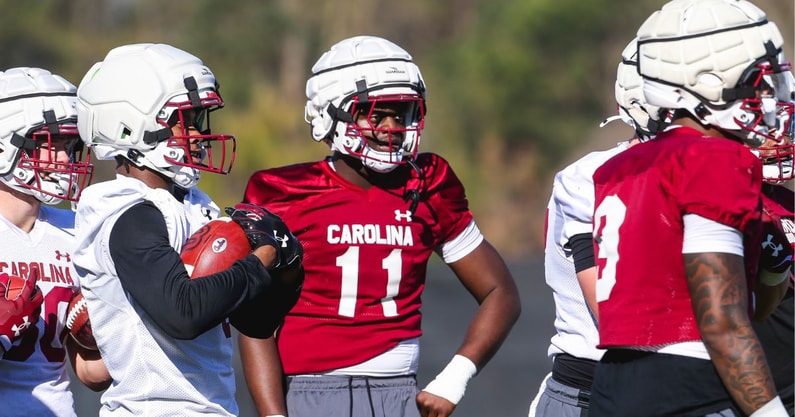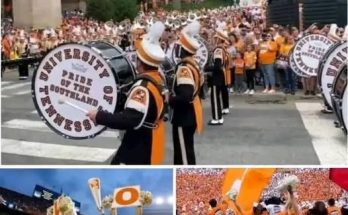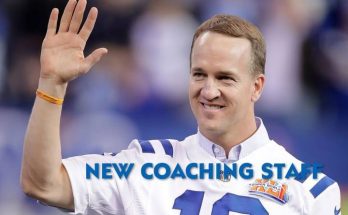As the South Carolina Gamecocks’ football team prepares for the upcoming 2025 season, the news that two of their transfer players will miss the remainder of the spring due to injuries has sent shockwaves through the fanbase and coaching staff alike. Spring practices are often the time when new players, particularly transfers, have the opportunity to integrate into the system, build chemistry with their teammates, and establish themselves as key contributors for the upcoming season. However, with two significant injuries sidelining these transfers, South Carolina must now adjust its approach for the spring and beyond.
This article will explore the impact of these injuries on the Gamecocks’ roster, how the coaching staff can manage this setback, and what it means for the team’s overall preparation heading into the fall. Additionally, we’ll take a deeper dive into the players affected by the injuries and what their absences might mean for both the team’s immediate future and long-term goals.
The South Carolina Transfer Strategy: A Blueprint for Success
Under head coach Shane Beamer, South Carolina has made significant strides in its recruiting efforts, especially through the transfer portal. With college football programs evolving at a rapid pace, the transfer portal has become an essential tool for teams looking to fill immediate needs and strengthen their roster. South Carolina has embraced this strategy in recent years, bringing in a variety of high-caliber players from other programs to help elevate the team’s performance.
Beamer’s approach to transfers has been strategic: seeking players who can contribute immediately and who fit the team’s culture and style of play. The Gamecocks’ coaching staff has done a good job of identifying talent that will make an impact from day one. This strategy has helped South Carolina remain competitive in the ever-competitive Southeastern Conference (SEC), where the margin for error is razor-thin.
For the 2025 season, South Carolina had already brought in some intriguing transfer players, and the spring practice period was an opportunity to evaluate their fit and role within the team. However, the injuries to two key transfers now pose a challenge for Beamer and his staff.
The Injured Players: Key Transfers Who Will Miss Spring Practice
The two players who will miss the rest of the spring are crucial transfers who were expected to contribute significantly to South Carolina’s 2025 season. These players were brought in to fill critical roles, and their injuries are a setback that will affect the Gamecocks’ ability to fully evaluate their roster during spring practices.
1. Transfer Wide Receiver – Malik McClain
Malik McClain, a wide receiver transfer from Florida State University, was expected to be one of South Carolina’s most impactful additions in 2025. At 6’4” and 210 pounds, McClain has the size and athleticism to make an immediate impact on the Gamecocks’ receiving corps. His combination of size, speed, and catching ability made him an attractive target for the Gamecocks, who were looking to add depth and skill to their wide receiver room.
Before the injury, McClain was poised to become one of the team’s primary targets in the passing game, helping quarterback Spencer Rattler expand the offense. His ability to stretch the field with deep routes and contribute to red-zone situations had many fans excited about the potential dynamic of the offense.
However, McClain suffered a lower-body injury during the early stages of spring practice, one that will sideline him for the remainder of the spring. This injury prevents him from gaining the valuable reps needed to build chemistry with Rattler and integrate into the offensive system. Additionally, McClain’s injury delays his ability to adjust to the speed and intensity of SEC play, where every game is critical.
While McClain is expected to recover in time for the fall season, the missed time during spring practice will hinder his ability to fully grasp the offensive playbook and develop a rapport with his quarterback. South Carolina will now have to rely on other wide receivers to step up during the spring while McClain works to rehab and get back to full health.
2. Transfer Cornerback – Tyrese Powell
Tyrese Powell, a cornerback transfer from the University of Maryland, was expected to be an immediate contributor in the Gamecocks’ secondary. South Carolina had a clear need at cornerback, and Powell, with his size and coverage skills, was seen as a potential starter for the Gamecocks. Powell’s addition to the roster was a strategic move to solidify the defensive backfield and give the team a reliable presence on the outside.
At Maryland, Powell showed promise as a capable cornerback who could cover a variety of receivers, from speedy playmakers to physical possession targets. His ability to play both press and off-coverage made him a versatile asset to the Gamecocks’ defense, and many believed that he would quickly become a leader in the secondary.
Unfortunately, Powell suffered an upper-body injury that will keep him out for the rest of the spring. This injury prevents Powell from participating in key practices, film sessions, and one-on-one drills that are essential for honing his technique and understanding the intricacies of the Gamecocks’ defensive scheme. With the injury, Powell will be forced to watch from the sidelines as other cornerbacks attempt to claim starting spots.
For South Carolina’s defense, the loss of Powell for the spring is a significant blow. It delays Powell’s development in a crucial year, especially as the Gamecocks prepare to face some of the most potent offenses in college football. Like McClain, Powell is expected to be ready by fall camp, but missing the opportunity to compete during the spring makes it harder for him to establish his role in the defense.
The Impact on the 2025 Season: What This Means for South Carolina
While the injuries to McClain and Powell are significant setbacks, they do not necessarily spell doom for South Carolina’s 2025 season. The Gamecocks are fortunate that both players are expected to recover in time for the fall, giving them the opportunity to make an impact when the regular season begins. However, there are still important ramifications for the team’s preparation and overall outlook.
1. Limited Evaluation and Depth Development
One of the primary functions of spring practice is to evaluate players and establish depth across the roster. With McClain and Powell sidelined, the Gamecocks’ coaching staff will miss the chance to see these transfers in action during key practices and scrimmages. This lack of evaluation will make it harder to project how they will perform when the team faces more difficult competition in the fall.
In addition, other players will need to step up and fill the void left by McClain and Powell. For the wide receiver position, younger players or returning veterans will have to take on larger roles in the absence of McClain, giving them a chance to prove themselves and solidify their spots in the rotation. Similarly, the cornerback position will see increased competition, with other players vying for the starting role that Powell was expected to fill.
While this competition will help build depth, it also means that South Carolina’s coaches will have less clarity on the strength of their roster heading into the fall. The lack of reps for McClain and Powell in the spring could result in slower development when they return to the field.
2. Adjustments to the Offensive and Defensive Schemes
McClain’s absence will likely force South Carolina’s offense to adjust its schemes and personnel usage. Without a player who can stretch the field vertically, the Gamecocks may need to rely more heavily on their other wide receivers and their running backs in the passing game. The offense may focus more on short-to-intermediate routes and rely on the development of chemistry with other playmakers.
On the defensive side of the ball, Powell’s injury will force the Gamecocks to test out different cornerbacks and defensive backfield combinations. South Carolina’s defense may take on a different look as the staff works to identify who can step up in Powell’s absence. The coaching staff will need to assess the performances of other defensive backs and determine which players can be trusted to defend the pass effectively when the season begins.



